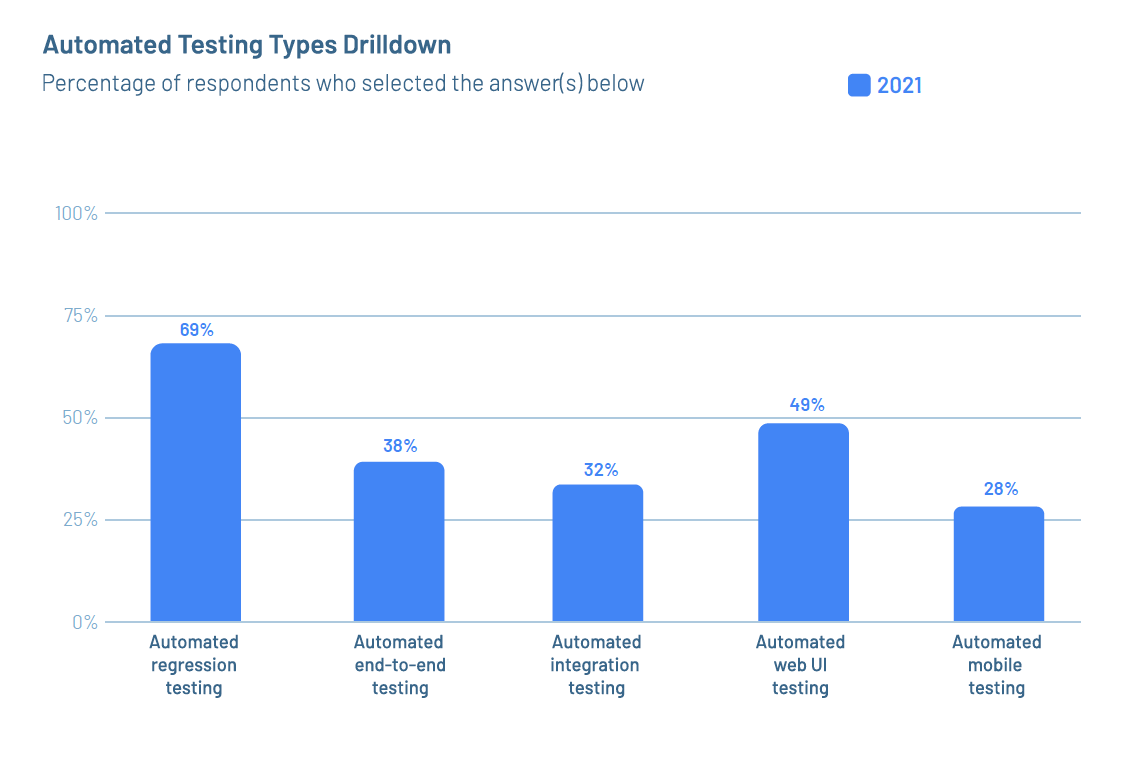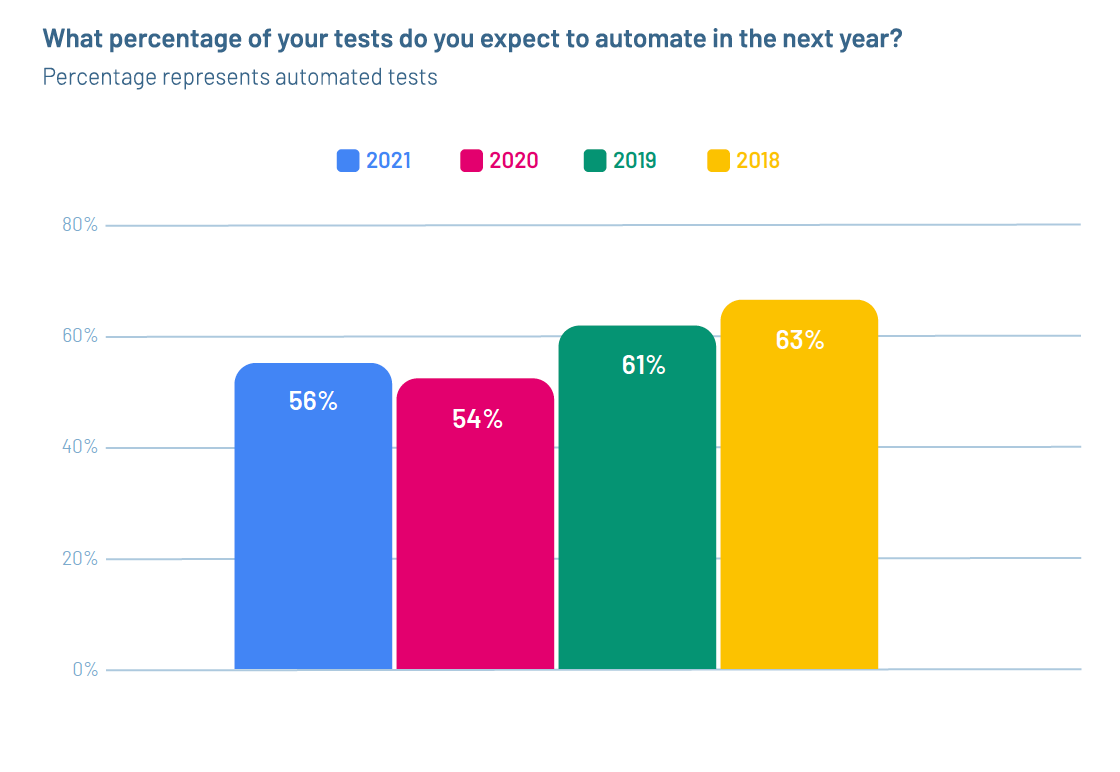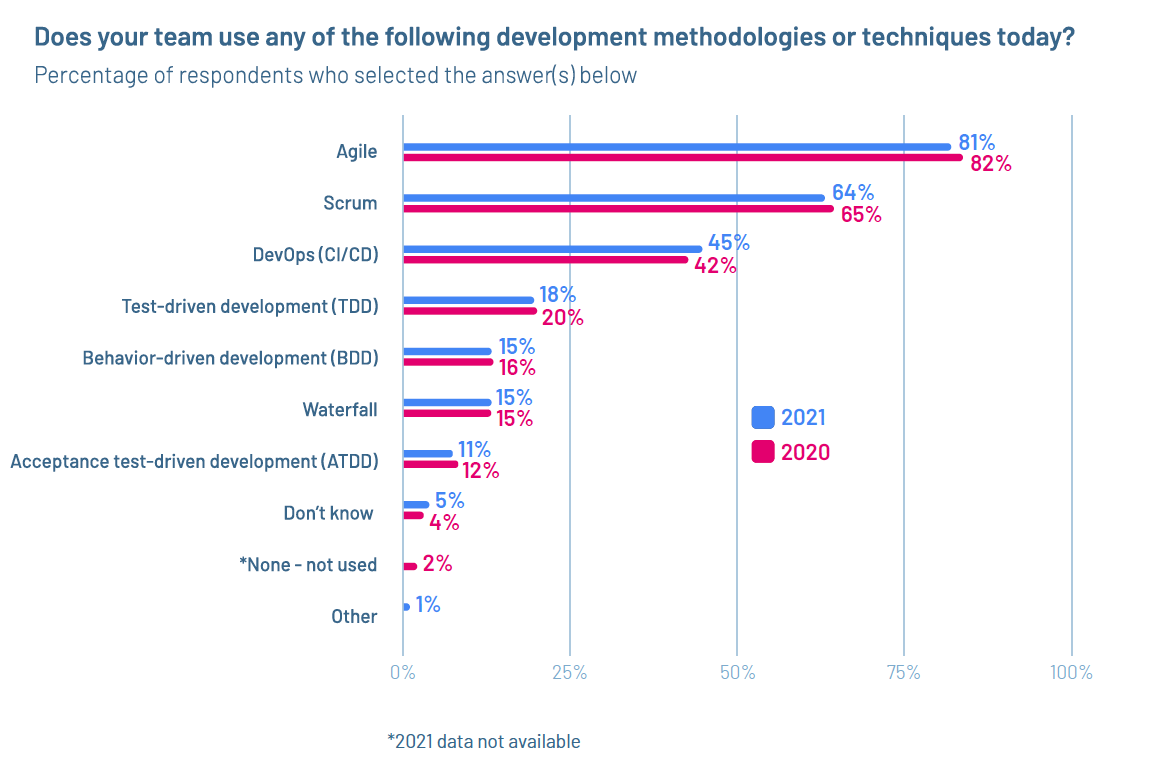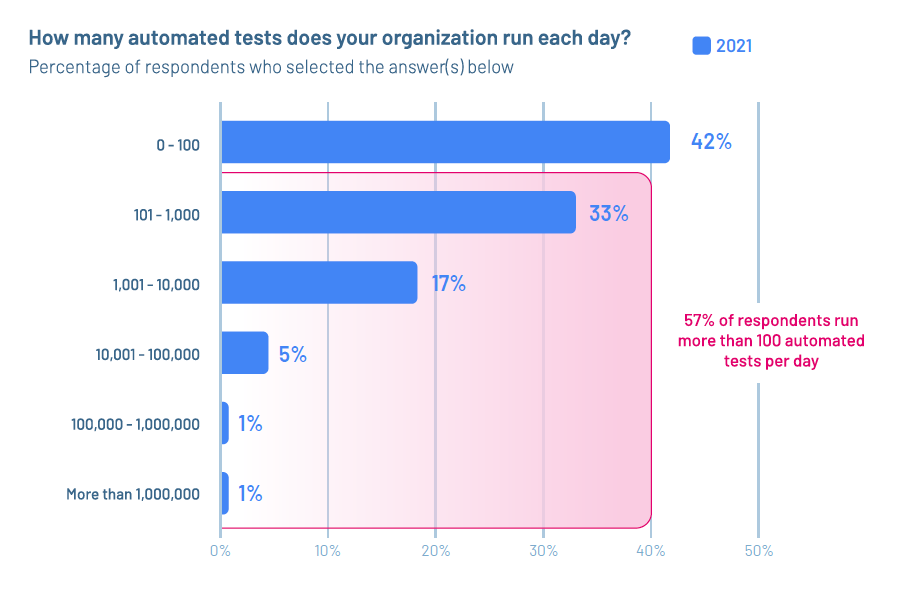2022 Software Testing & Quality Report
2022 Software Testing and Quality Report
See how software testing teams like yours are taking on testing and QA in 2022!
Find out how other QA engineers, testers, SDETs, and more, from 30+ industries and 100 countries around the world are taking on testing and QA today! In this report, we uncover surprising data about the adoption of test automation, questions about the business impact and ROI of testing, and people’s primary objectives around quality right now!
Download the 2022 Software Testing and Quality Report to learn more about:
Which testing methodologies and techniques your peers are currently using and which they are considering adopting over the next 12-24 months
How teams like yours are approaching test automation and what struggles they’re finding balancing automated and manual testing projects
The biggest challenges testing teams are facing today like increasing automation and integrating testing with CI/CD pipelines
The most common testing KPIs and how those are shifting over time as DevOps becomes more widely adopted
The top priorities for testing and QA teams



